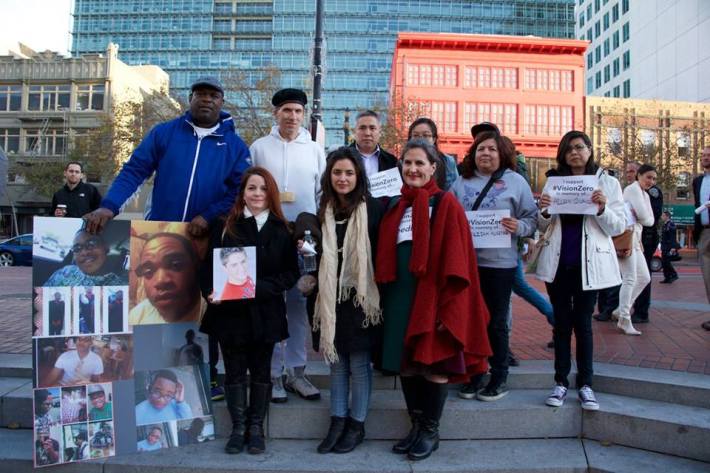We Can Stop Speeders and Save Lives. Why Aren’t We Doing It?
10:49 AM PST on December 4, 2015

A few years ago, while visiting France, I drove with a friend from Paris to Normandy on the A-13 motorway. We set the cruise-control at the speed limit. To my surprise, nobody passed us. Contrast that to any road in California, where if you go the speed limit, you will be passed continually.
That's because if you speed on the A-13, you will get a ticket, whether or not you encounter a cop. French highways are lined with automated speed enforcement (ASE) cameras. Speed past one, and it photographs your license plate. You get a ticket in the mail, just like with a red light camera.
“If we had been using ASE in cities like San Francisco, San Jose, and Los Angeles, many of our loved ones might still be here with us today,” said Nicole Ferrara, executive director of Walk San Francisco, at a recent event remembering people killed by cars. “The state needs to prioritize safety and take steps to implement solutions now.”
In 2013, there were 42 traffic deaths on San Francisco streets. Kate Breen, government affairs director for the SFMTA, stressed that speeding is the number one cause of traffic fatalities. “We want to use ASE cameras to target areas where you find excessive speeds... where you see cars going not one, two or three miles over the limit, but ten to fifteen,” she said.
Breen points to studies that put the survival rate for pedestrians struck by cars going 20 mph at 90 percent. But up that speed to 40 mph, and the survival rate plummets to 20 percent. Breen said that's why it's so important to use every available tool to keep speed in check. “ASE is a force multiplier for police enforcement.”
And one doesn't have to go to France to see automated enforcement at work. Portland, Oregon, is one of a handful of cities using it in North America: It reported a 53 percent reduction in fatalities where cameras were put in. Traffic deaths in Washington, DC, have likewise fallen by more than 50 percent as the city has rolled out more automated enforcement over the past several years.
Breen said the point isn't to "gotcha" speeders. Portland, for instance, uses huge signs warning about the cameras, much like we see “speed limit radar enforced” signs today. “We want to give people every opportunity to obey the law,” she said.
So what's holding back automated speed enforcement in the Bay Area?
California requires authorization from the legislature to use automated enforcement. And legislative experts say privacy concerns are primarily what's holding it back. “There's a history of attempts to do this that didn't even get a hearing in the first committee,” said a legislative aide who asked not to be identified. That doesn't mean it can't happen, he added, explaining that it's going to require making it clear that this is about saving lives, not generating revenue or going Big Brother on the public.
The privacy issue strikes me as a red herring. There are already cameras everywhere. And our cell phones broadcast where we go every day. The SF Controller's office suggested keeping fines lower than standard moving violations, since the cameras identify the registered owner of the car, not who was actually driving it. Such steps might deflect some of the opposition.
If people are concerned about getting photographed, remember the cameras only take your picture if you trip their speed-monitoring radar. In other words, if you don't want the cameras to get a shot of your car, don't speed.
To support ASE, sign WalkSF's petition.
Stay in touch
Sign up for our free newsletter



